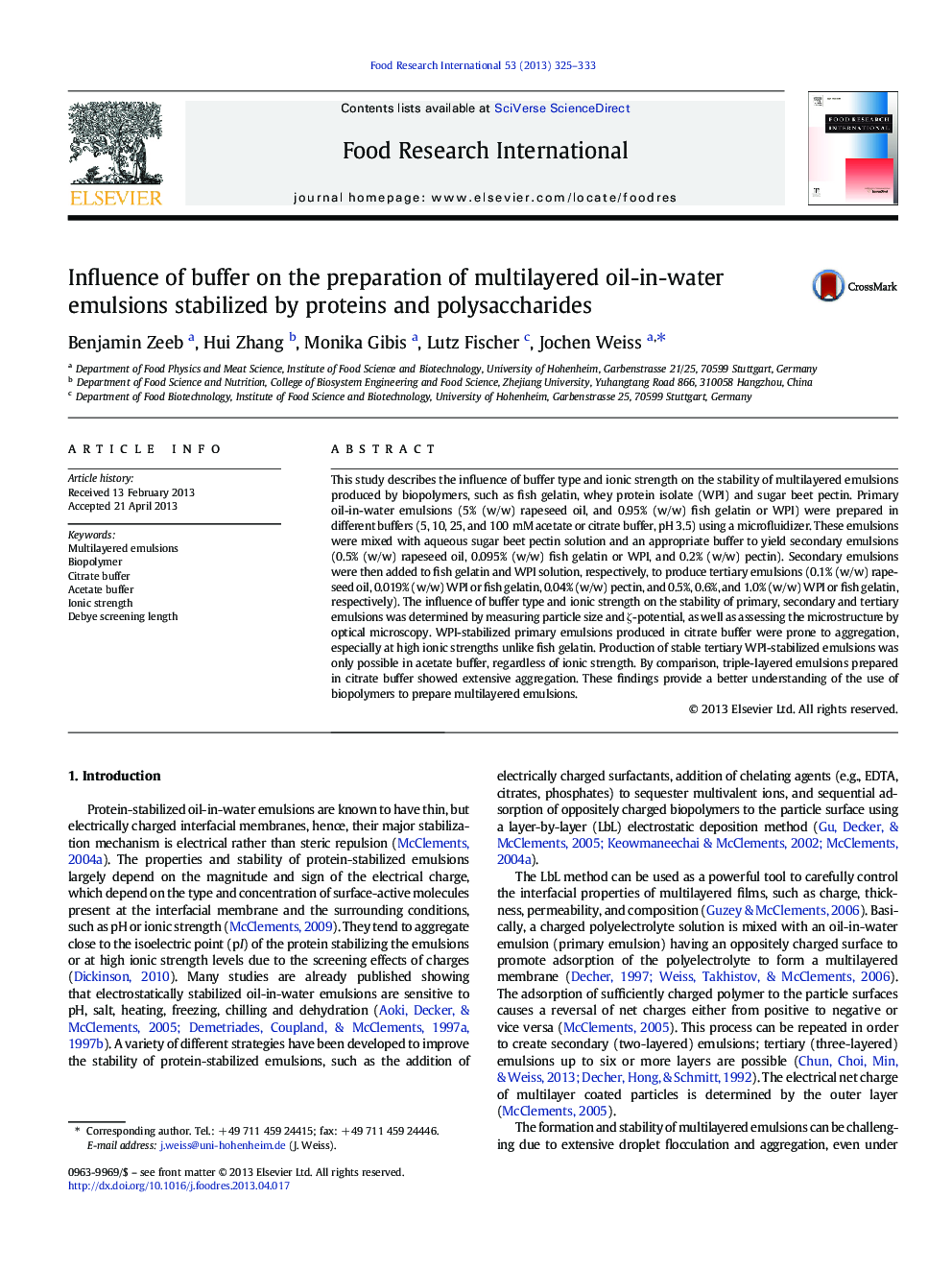| Article ID | Journal | Published Year | Pages | File Type |
|---|---|---|---|---|
| 6397756 | Food Research International | 2013 | 9 Pages |
â¢Acetate buffer is more suitable to prepare three-layered emulsions.â¢Heavy aggregation of oil droplets in citrate buffer was observed.â¢Fish gelatin could be used as an emulsifier to form small emulsion droplets.
This study describes the influence of buffer type and ionic strength on the stability of multilayered emulsions produced by biopolymers, such as fish gelatin, whey protein isolate (WPI) and sugar beet pectin. Primary oil-in-water emulsions (5% (w/w) rapeseed oil, and 0.95% (w/w) fish gelatin or WPI) were prepared in different buffers (5, 10, 25, and 100 mM acetate or citrate buffer, pH 3.5) using a microfluidizer. These emulsions were mixed with aqueous sugar beet pectin solution and an appropriate buffer to yield secondary emulsions (0.5% (w/w) rapeseed oil, 0.095% (w/w) fish gelatin or WPI, and 0.2% (w/w) pectin). Secondary emulsions were then added to fish gelatin and WPI solution, respectively, to produce tertiary emulsions (0.1% (w/w) rapeseed oil, 0.019% (w/w) WPI or fish gelatin, 0.04% (w/w) pectin, and 0.5%, 0.6%, and 1.0% (w/w) WPI or fish gelatin, respectively). The influence of buffer type and ionic strength on the stability of primary, secondary and tertiary emulsions was determined by measuring particle size and ζ-potential, as well as assessing the microstructure by optical microscopy. WPI-stabilized primary emulsions produced in citrate buffer were prone to aggregation, especially at high ionic strengths unlike fish gelatin. Production of stable tertiary WPI-stabilized emulsions was only possible in acetate buffer, regardless of ionic strength. By comparison, triple-layered emulsions prepared in citrate buffer showed extensive aggregation. These findings provide a better understanding of the use of biopolymers to prepare multilayered emulsions.
